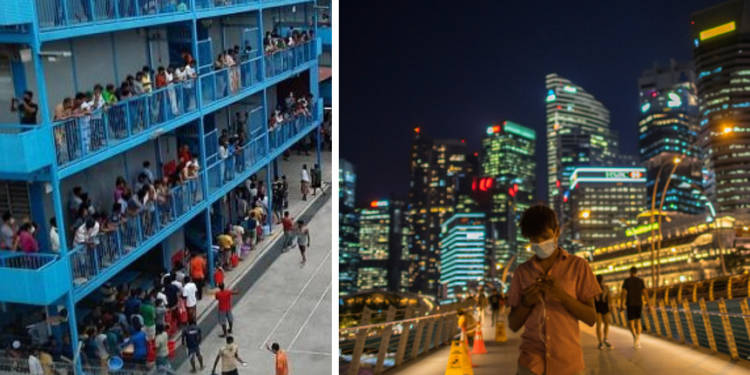Singapore is one of the most developed and well-off nations on the globe but its handling of the Wuhan coronavirus has been poor as its no lockdown move has massively backfired. The famed ‘Singapore model’ to combat the virus now lies in tatters as the country as the virus continues to pummel Singapore.
The most developed sovereign nation in Asia with 7th highest GDP per capita in the world, Singapore initially seemed to handle the spread of the virus well that too in the absence of a nationwide lockdown. Many across the world and in India, cited Singapore’s “success” to resist lockdown and used as a counter-example to the idea of fighting the Wuhan coronavirus with the lockdown.
As Singapore is now pummelled by the second wave of infections, the city-state has seen its model fall flat on its face with its vulnerabilities and failures laid bare as it finally enforced a nationwide lockdown on April 6 till June 1. Singapore paid the price of relaxing the norms of social distancing prematurely and is now hit with a second wave of infections as the virus is rising sharply in Singapore.
It was foolhardy to compare the city-state which has a population of just 5.6 million and with an area of just 725 square kilometres with larger nations especially like India. Initially, while everything looked excellent, beneath the surface the virus was silently spreading in Singapore’s dorms.
Singapore heavily relies on foreign labourers who due to their low pay reside in tightly packed dormitories with the dormitories now becoming the epicentre of the virus in the nation. Through a combination of strict border screening, rigorous contact tracing and surveillance, the city-state appeared to have the virus in control and hence, avoided the lockdown as most of the restaurants, businesses and schools remained open.
The lack of lockdown saw the migrant community face the brunt of lockdown as social distancing in Singapore’s dormitories is a non-starter. When Singapore was at 3,252 recorded cases of the virus on April 14, out of that a whopping 1,625 cases were linked to outbreaks in migrant worker dormitories.
“[You’ve got] hundreds of thousands of men in pretty overcrowded places and what this tells us is that you can have all the systems in place, you think you have got your eye on everything.” said Dale Fisher, Professor at the National University of Singapore.
Singapore houses around 300,000 migrant workers which also makes up for most of its manual labour from working at construction sites to helping the elderly at the hospitals and live in cramped and unsanitary conditions. Medical experts and Rights groups had tried to warn about Singapore’s initial policy of tackling the virus which ignored the conditions of the migrant workers who stay in cramped spaces. Shockingly, when Singapore undertook a nationwide mask distribution, the government excluded the migrant workers. As thousands of workers are confined to packed quarters, the virus is spreading unabated as social distancing is impossible to follow in the nation’s dormitories.
Earlier in April as the nation witnessed a sharp rise in the cases of the virus, Singapore enforced a lockdown and ramped up testing in the dormitories which is already delivering results. An increase in testing is seeing an increase in the number of cases coming out of the dormitories but the cases among the wider community have witnessed a downward trend.
Experts have warned that Singapore must brace for a few weeks of high numbers as measures such as moving “essential” workers into military camps, public housing, and industrial accommodation ships will take time to reflect.
A country of 5.6 million having over 12,500 cases of the virus is certainly worrying and has brought to light about the unsanitary living conditions of the migrant workers. In Singapore’s dormitories, there are often 12 to 20 migrant workers living in one room with the shared bathrooms and showers often out of water and soaps. The country’s manpower minister has vowed to improve the conditions of the dormitories in the wake of the pandemic.
The Singapore government’s overconfidence and lack of crisis awareness played a key role in Singapore witnessing a second wave of infections, despite having one of the most efficient public health systems in the world. Singapore government committed a major folly as initially it encouraged people to go about their lives, such as working, studying, travelling as normally as possible while asking people not to wear a mask if they are not sick.
Singapore presents a classic case study that social distancing is the only way to defeat the highly contagious virus and all other models which don’t encourage a lockdown are dangerous and must be binned at the earliest.


































